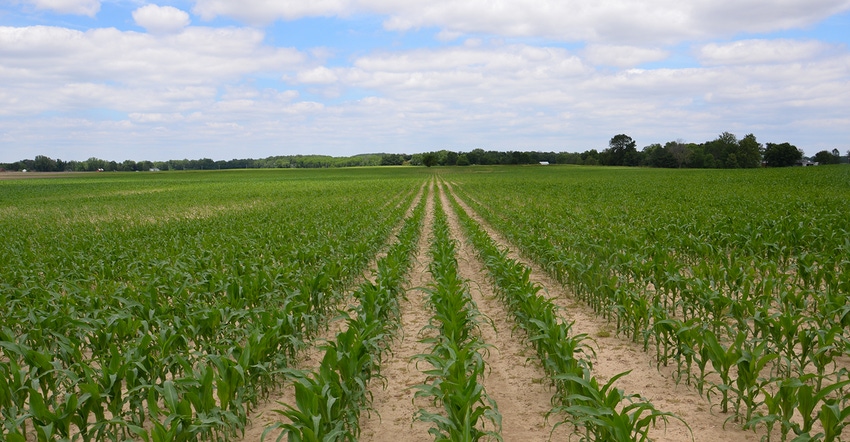
Captain Stubby of Prairie Farmer fame once said that there were some babies only a mother could love. There is a point in every season when almost every cornfield goes through an awkward stage, notes Chasitie Euler, accounts manager for DuPont Pioneer in northwest Ohio.
Even if it’s your field, it may be hard for you to love it. That was true with many fields in 2017 in Indiana, Ohio and other states where rain and cool weather hampered crop emergence and also stretched out the planting season.
The phenomenon of corn going through an awkward stage — which also might be described as the equivalent of a dairy calf looking gangly, being all legs and a tail before filling out — is definitely real. And it has an explanation, Euler says.
4- to 5-leaf phenomenon
“About the time corn reaches V4 to V5, or the four- to five-leaf stage, it switches from living off the primary root system to newly developed nodal roots,” Euler explains. “Until at least the V4 stage, energy for the plant typically is supplied by the seed.”
Once a corn plant reaches that point, it begins to put out its first of three sets of nodal roots, Euler adds. The nodal roots begin picking up nitrogen, phosphorus, potassium and micronutrients from the soil. The transition period when plants switch over from feeding off the seed to feeding on nutrients from the soil supplied by the plant’s roots typically lasts five to seven days, Euler says.
“That��’s when growers begin to wonder why their field isn’t as green and uniform as they think it should be,” she says. “It’s a process that happens each year.”
Think of it like an infant being weaned off milk. “Corn plants are weaned off the supply of nutrients that was in the seed, and have to bring in their own food through their roots,” she explains.
Comeback kids
One option is making a foliar application to assist the plant during this phase, Euler says. Most generally, corn on lighter-textured soils may show signs of sulfur, zinc, manganese or magnesium deficiency. Foliar fertilizer products can be combined to address identified deficiencies.
The question is whether a foliar application is necessary at that point, Euler says. “In a good growing season, the benefit may be more cosmetic,” she says. “It may make a grower feel better, but typically yellowing or purpling will clear up with sunshine and warmer conditions.”
In years like 2015 and 2017, where parts of northern Ohio and Indiana received abundant to excessive rainfall and experienced cool temperatures and a lack of sunshine, plants were under enough stress that purpling or yellowing occurred, especially on lighter-textured soils. In these cases, a foliar application would provide a benefit to assist the plant through this stressful time.
“Typically, once the transition is made, corn plants begin taking up nutrients to overcome deficiencies,” Euler concludes. “They take off and jump into the rapid growth phase.”
About the Author(s)
You May Also Like




